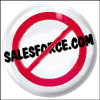Three CRM 2.0 solutions you absolutely must try.
1. Collaborative CRM
Bitrix24.com is probably the fastest growing CRM 2.0 solution, if 2.0 means collaborative CRM to you. Essentially Bitrix24 is enterprise social network, plus CRM, plus project management, plus planner, plus document manager, plus business process construction and 30+ other tools. Here’s a typical scenario for Bitrix24 use. Let’s say you are a web design firm with a free quote form on your website. As soon as the form is filled out, Bitrix24 creates a task for one of your employees – get in touch with the person who filled out the form. You can set up your Bitrix24 in a way that all quotes for work over $5000 go to employee A and all work under $5000 to employee B. Then the employee calls or e-mails a client from INSIDE Bitrix24. If necessary, Bitrix24 calendar schedules a meeting. Depending on the outcome of this conversation, Bitrix24 can automatically create a new task for a new employee – like “Send contract to” or “Create draft by”. At this point you can also create a workgroup for a specific project and invite client and all relevant employees there. You can post drafts in the activity stream and your client(s) will provide feedback. You can also use Bitrix24 WebRTC based videochat that works just like Skype to have ‘face-to-face’ conversation. Because Bitrix24 tracks time spent on each project and has invoicing, you can send the bill via Bitrix24 to your client as well. Should any questions arise, they can be solved inside Bitrix24. So essentially, it’s a collaborative CRM – a place where sales person, who brought the client in, the client herself, the account lead, the designer, the web developer, the lawyer, the accountant, the HR person can all work together and collaborate on pretty much any project. From brain storming to file sharing – all collaboration tools are there and they are tied into CRM. And because Bitrix24 is 100% free for companies with 12 employees or fewer, it’s no wonder it’s such a popular CRM 2.0 solution.
2. Social CRM
Nimble, just like Bitrix24, became a clear leading CRM 2.0 solution in a very short time (probably because CRM industry legend Jon Ferrara of the Goldmine CRM fame is behind it).That is if 2.0 means using social network data for selling to you. A typical Nimble CRM scenario looks something like this. You are enterprise software salesperson. So you are very interested in CTOs, CIOs and heads of IT departments. It just so happens that LinkedIn makes it very easy to find these people, their names and company addresses. So you import all this information into your Nimble CRM. But that’s not all. Nimble works with LinkedIn, Twitter, Facebook and Google+, importing all messages, posts, tweets and status change notifications. Let’s say an important business meeting with one of your hot prospects is in an hour. You go into your Nimble account, click the prospect name and you now have access to all recent social network activity of this person instantly. You know from his last tweets that he has just returned from a vacation in Fiji and Facebook pictures suggest that this person just became a grandfather. So you start your conversation by congratulating him and share your Fiji experience, and before you know, you are almost best friends. Tricky? Devious? I’d prefer damn effective or brilliant as the best word that describes Nimble. Nimble CRM is free for solo use.
3. User driven customer relationship management.
Traditional CRM is used for sales mostly. And not everyone believes that proactive sales is the best way to grow a company, so for these folks CRM 2.0 designation means user driven CRM. Some of these CRM 2.0 tools are vendor specific, like Dell’s IdeaStorm.com but the best example of a reverse CRM is probably UserVoice.com. A typical scenario looks like this. A person registers at UserVoice.com. She then goes through items, gadgets, software and services she uses (Windows Phone or Hootsuite, for example), to provide feedback and ideas. This is where you come in. You can tap into the wealth of this knowledge and actually actively solicit this feedback, especially if you place UserVoice module on your website as the made feedback form. Clearly, you won’t have access to all users, but with UserVoice you can get to the most important part – early adopters and brand ambassadors. Like Bitrix24 and Nimble, UserVoice gives you an option – use if free or pay for advanced options.
Clearly, these three CRM 2.0 solutions are very different but you can probably use all of them. In fact, I insist that you should. Happy sales to you!












